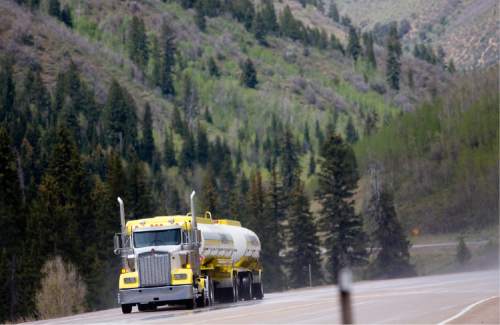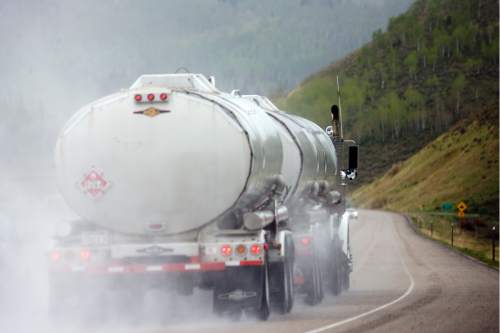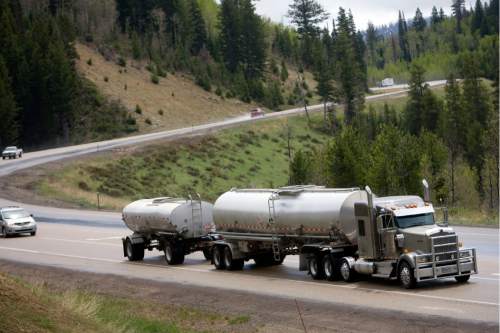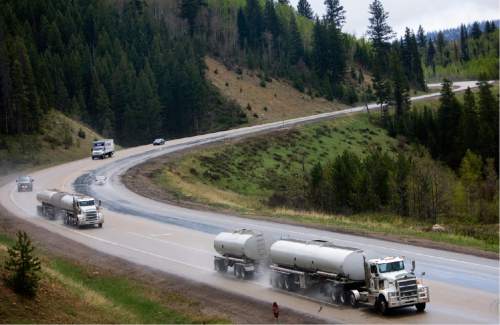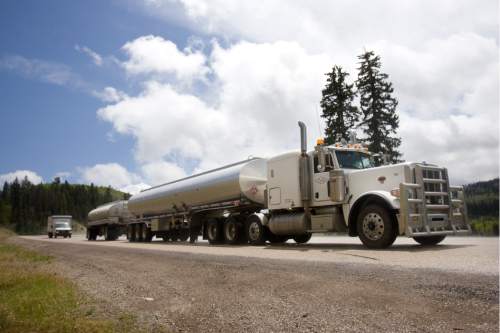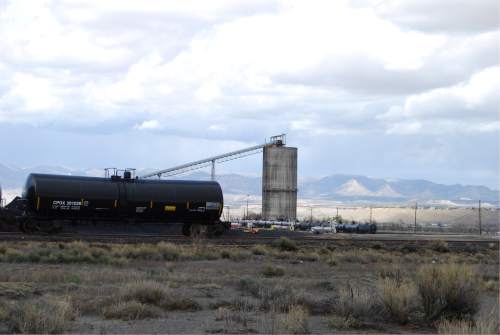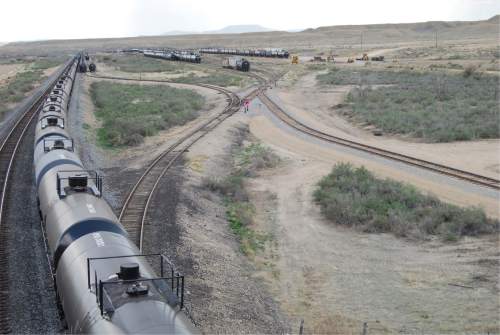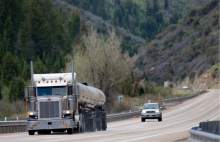This is an archived article that was published on sltrib.com in 2014, and information in the article may be outdated. It is provided only for personal research purposes and may not be reprinted.
Eastern Utah officials have decided to sidetrack plans for a multibillion-dollar railroad to transport crude oil from the Uinta Basin.
"The economics are just not there," especially because officials figure now that the cost would be closer to $5 billion than to the initial $2 billion estimate, said state Sen. Kevin Van Tassell, R-Vernal, co-chairman of the Legislature's Transportation Interim Committee.
He said officials from six eastern Utah counties — Uintah, Duchesne, Daggett, Carbon, Emery and San Juan — who met last week agreed it would be wiser to pursue other options for now, such as building pipelines or improving highways for continued or expanded trucking of oil.
Earlier this year, the Utah Department of Transportation completed a study of 26 possible routes for a rail line from the Uinta Basin and concluded only one was feasible: a 100-mile route southwest to Price, roughly along U.S. 191, which would require a 10-mile tunnel. It would connect to existing rail lines near Price.
UDOT estimated it would cost about $2 billion, using rough cost-per-mile standards of railroads nationally.
But Van Tassell said eastern Utah officials did more study and figured the cost would be around $5 billion, including interest to pay for it.
"As we've done the economic study and done a more complete analysis of the cost of the railroad, at this time the economic drivers to make it successful are just too risky," said Van Tassell, a banker.
He added that the rail line may make more sense in the future when, and if, such products as oil shale and oil sands are more fully developed, and create more demand for better transportation.
"It's going to take awhile before some of the other things that would help pay for it come on line. So we're probably at a standstill until more things happen that would help it pay for itself," Van Tassell said. "We may dust this off again in the future."
An earlier state study said that without the rail route or alternatives, such as new pipelines or freeways, $30 billion worth of oil and gas could remain undeveloped in the basin during the next three decades because of transportation constraints. It said that could cost Utah's economy $10 billion and prevent creation of 27,000 jobs.
"The cost and the time factor in getting [the railroad] done is more than we had originally anticipated," Van Tassell said. "So we've got to look at other systems to move product out of the basin other than the railroad at this time."
Crude oil is now moved by a constant parade of large trucks on narrow and somewhat-dangerous U.S. 40 to Interstate 80 to refineries in North Salt Lake, although some trucks take also-narrow U.S. 191 to rail connections in Price.
"Tesoro is looking at a doing a heated pipeline to move the waxy crude" as an alternate, Van Tassell said.
Much of the oil from the Uinta Basin is waxy. If not heated during transport, it essentially turns into a large solid candle. Oil from oil shale and oil sands would not have the waxy content.
To reduce problems with waxy crude, Van Tassell said, officials are looking at partially processing it in the basin. "It wouldn't be a refining process, but would make the waxy crude easier to pipeline."
Officials will also look at improving highways to more safely truck additional crude oil.
Van Tassell said officials are continuing to look at "a little bit of everything to find an economic mix that will work."


